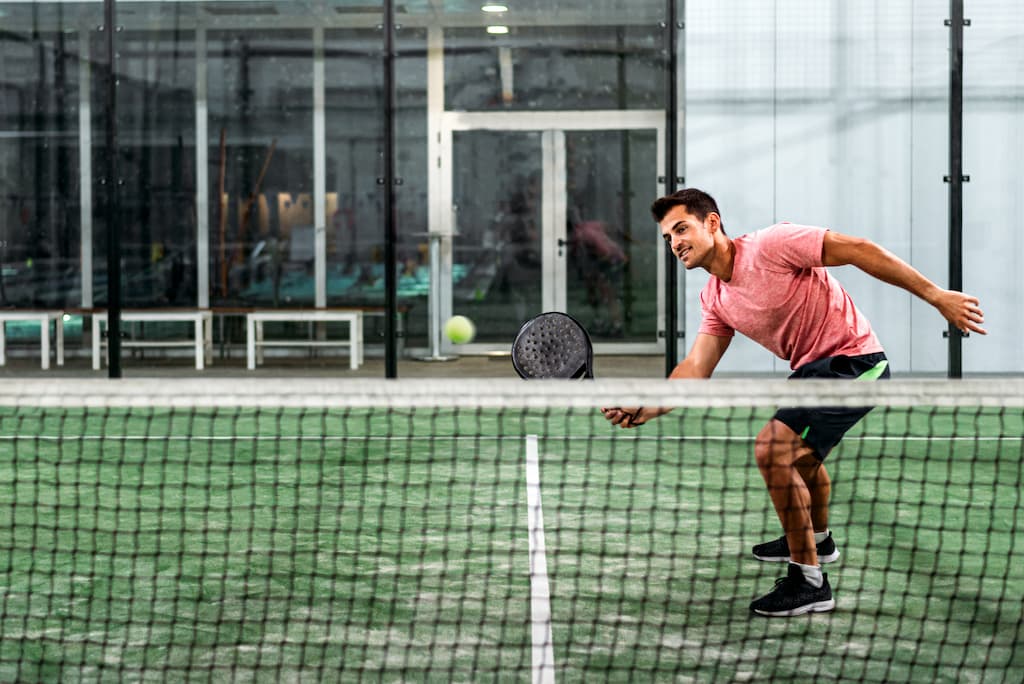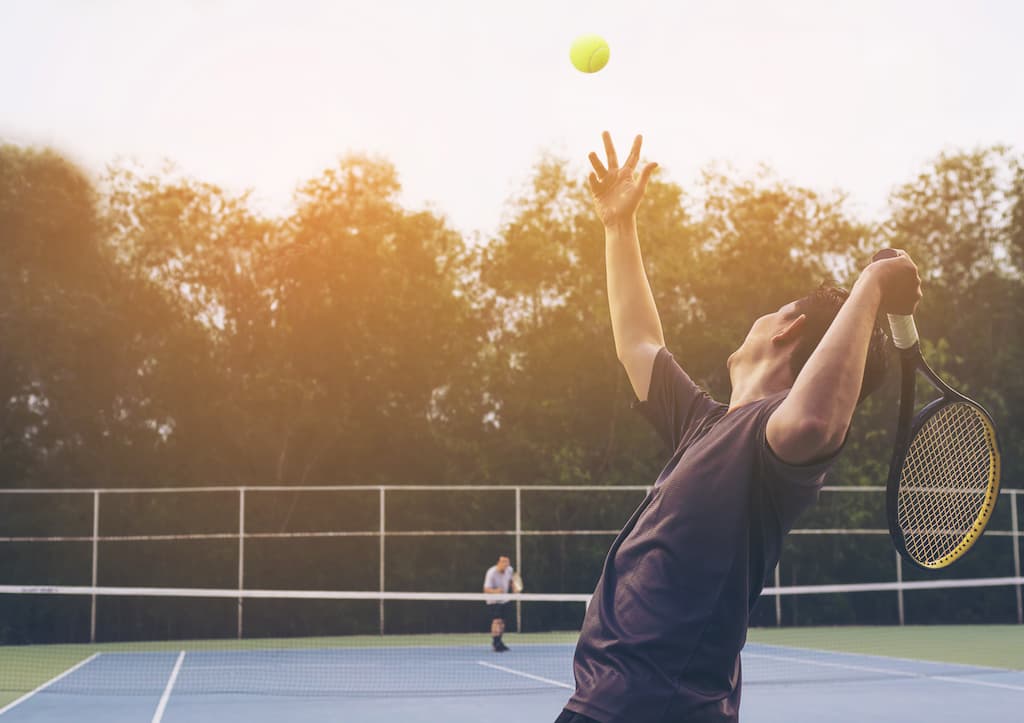Tennis and Padel, though distinct in their court dynamics and equipment, share a core foundation rooted in racket sports. For an avid tennis player, transitioning to Padel isn’t about starting from scratch; it’s about adapting and leveraging.
Your tennis background equips you with excellent hand-eye coordination, an understanding of racket dynamics and groundstroke techniques, and the instinctive ability to read ball trajectories. All of these are tremendously beneficial in Padel. The challenge lies not in learning a new sport but in fine-tuning and adjusting those well-practiced tennis techniques to fit the unique Padel’ court surfaces, rules, and strategies.
Key Takeaways
- The fundamental racket skills from tennis, such as groundstrokes and volleys, provide a strong foundation for Padel.
- While there are many similarities, Padel introduces unique elements like wall play and underhand serves that require strategic adjustments.
- Transitioning to Padel broadens your tactical horizons, adding shots like ‘bandeja’ and utilizing new court angles.
Transferable Skills from Tennis to Padel

Baseline Play
In both Tennis and Padel, effective groundstrokes form the backbone of a strong game. The tennis court is expansive, allowing for deeper shots, while the Padel court size mandates players to focus more on precision and angles. This shift from the more extensive tennis court to the compact Padel court might require some adjustment.
Net Play
Having played on the tennis court, the volleying skills you’ve honed will undoubtedly serve you well in Padel. Given Padel’s enclosed court nature with glass walls, you should anticipate quicker exchanges and reflex volleys. The back walls in Padel mean balls can come back into play, making net play dynamic.
Serve and Return
Tennis typically involves overhand serves, with players using tennis balls to generate topspin or slice. In contrast, Padel utilizes an underhand approach with the Padel ball, which is slightly softer. While the fundamental principle of setting up the point remains, returns in Padel often require players to employ more slices and to use the walls advantageously.
Techniques that Require Adaptation
Spin and Power
In tennis, players often deploy topspin to make the tennis balls dive and bounce high. But in Padel, due to the solid structure of Padel rackets, flat shots and slices can be more effective. Moreover, power should be controlled and used strategically, especially given the proximity of the walls.
Movement and Footwork
Both sports require agility, but lateral quickness becomes paramount in Padel due to its narrower court compared to the tennis court. Prepare for quick directional changes, especially since the ball can rebound off the walls.
Strategy and Tactics
One of the biggest differences between the two sports is the walls in Padel. They introduce a unique tactical dimension. While tennis often focuses on groundstrokes, net plays, and drop shots, Padel requires players to incorporate shots like the ‘bandeja’ and ‘chiquita’ and to master playing with different court angles.
Mental and Physical Preparation
Adapting to Padel’s rhythm might require not just enhancing endurance but also building explosive strength due to quick directional shifts, especially for longer rallies. Training for the world Padel tour or any professional Padel circuit implies rigorous preparation. Transitioning mentally involves not only embracing the walls as part of your strategy but also understanding the court surface differences.
While agility is prized in both Padel and tennis, remember that patience in Padel is particularly vital due to the added dimension of wall play. Incorporating specialized Padel shoes can aid in providing the right grip and support, differing from tennis shoes that are designed for different court types.
Tips for Seamless Transition
When moving from tennis to Padel, consider enrolling in a specialized Padel clinic or hiring a coach to familiarize yourself with the nuances of the sport. Observing high-level Padel matches, especially from the world Padel tour, provides invaluable insights into strategies and movement patterns unique to Padel. Don’t just be a spectator; engage in matches with seasoned Padel players.
Their real-time feedback and insights can accelerate your learning curve. While your tennis background will be a strength, be conscious of not over-relying on tennis instincts, especially in the initial stages. Remember, transitioning smoothly might also involve changing equipment; for instance, a Padel racket differs significantly from a tennis racket.
Understanding the Key Differences Between Tennis and Padel
While both sports belong to the racket family, the distinctions are notable. The Padel court, enclosed by walls, allows wall play—a feature absent on the open tennis court. Padel and tennis rackets are contrasting: Padel rackets are solid and stringless, while tennis rackets have strings.
The court surface in Padel usually incorporates artificial grass with sand, affecting ball behavior differently than the hard, clay, or grass courts in tennis.
The balls in both sports, though seemingly similar, have distinctive characteristics: Padel balls are less bouncy and slightly softer than tennis balls. While Padel has some similarities with platform tennis due to the enclosed court, the rules and equipment vary.
The Benefits of Being a Crossover Athlete
Transitioning from tennis to Padel or vice versa is more than just about adding another sport to your repertoire. It’s about merging the skills and strategies of both worlds. Tennis players often find that their court awareness, honed on the expansive tennis courts, gives them an edge on the compact Padel court.
This synthesis of skills can lead to a unique playing style, often catching pure Padel players off-guard. Furthermore, engaging with both the tennis and Padel communities offers networking opportunities, exposure to diverse playing styles, and broadens one’s sporting horizons.
Conclusion
The realm of racket sports is vast and varied. Embracing both Tennis and Padel signifies an athlete’s versatility and passion for the game. The intricate dance of adjusting, adapting, and excelling is the hallmark of a dedicated player. So, if you’re a tennis enthusiast contemplating a foray into Padel, hesitate no more. Dive in and discover the challenges and rewards that the world of Padel has in store.
Frequently Asked Questions
What is the difference between Padel and tennis?
Padel and tennis are both racket sports, but there are some key differences between them. Padel is typically played on a smaller court, with walls surrounding the playing area that can be used to keep the ball in play. The balls used in Padel are also different from those used in tennis, with Padel balls being slightly smaller and less bouncy. Padel also uses different scoring rules than tennis, with matches being played to the best of three sets and tiebreaks being played at 6-6 in each set.
What are some tips for learning Padel?
If you’re new to Padel, there are a few things you can do to improve your game. First, focus on your footwork and positioning, as this is crucial for getting into the right position to hit the ball. It’s also important to work on your serve, as a good serve can give you a big advantage in Padel. Finally, try to play with more experienced players, as this can help you learn new techniques and strategies.

